Features of the
In the interior, porcelain stoneware has been used relatively recently: since the 1950s, several European factories began to produce and use the material in decoration.
Since the production technology was new and unrefined, the quality turned out to be low, and the choice of colors and textures remained rather scarce. While ceramic tiles have been produced for almost half a century and their range was surprisingly wide.
The production of porcelain stoneware began by mistake - the technologist mixed the mixture for the tiles incorrectly and received a completely new material.
However, the new finishing material had undeniable advantages over conventional ceramics, and therefore huge potential. Having improved the technology, the craftsmen received a strong, durable, practical product that today is a serious competitor to the habit of ceramics.
In the photo there is a slab 60 * 60 cm on the floor
Porcelain stoneware is produced in 4 stages:
- Kneading... The mixture for the future porcelain stoneware, oddly enough, does not contain granite chips. The slabs are based on clay, kaolin, feldspars, quartz sand and minerals.
- Press... Thoroughly mixed raw materials are sent under a press, which compresses the mass under a pressure of 400-600 kg / cm2. After pressing, no pores and voids remain inside - this stage makes porcelain stoneware stronger.
- Burning... At a temperature of 1200-1300 degrees Celsius, minerals and quartz melt, combining all the particles in the composition into a solid monolith.
- Grinding, polishing... The texture of the future porcelain stoneware depends on what kind of abrasive and how carefully the slabs are polished, and whether they are polished or not. Unpolished porcelain stoneware is also glazed to make it more resistant to dirt.
What is the difference between a porcelain stoneware tile and a simple ceramic counterpart?
- Full thickness paint... Most types of porcelain stoneware are colored not during processing, but when the composition is mixed. The color of the tiles, on the contrary, is given by the coating. Although, in fairness, it is worth noting that glazed porcelain stoneware in this regard is similar to ceramics.
- High resistance to mechanical stress... Bikottura does not differ in increased strength - it is used only for walls. The monocotura is more durable, suitable for the floor. And porcelain stoneware tiles are even stronger: they are used in places with high traffic (shopping centers, offices, museums, galleries).
- Thickness... Porcelain stoneware tiles are denser, thicker and heavier: they reach a height of 2 centimeters. The ceramics are thinner, lighter: 8-10 mm with glaze.
As for the dimensions of the slabs themselves, porcelain stoneware is usually larger than tiles: 60 * 60 cm, 60 * 120 cm, 100 * 100 cm.But there are also decorative options with dimensions of 30 * 30, 20 * 60, etc.
Pros and cons
Porcelain stoneware is used more and more often for the decoration of residential premises, thanks to its undeniable advantages before analogs:
- Environmentally friendly... It contains only natural ingredients that are held together by pressing and baking. No glue and resins that are dangerous to humans.
- Is universal... It is used for finishing the floor and walls inside the house (bathroom, hallway, living room, kitchen), as well as outside.
- Resistant to external influences... Not afraid of ultraviolet radiation, high humidity, temperature extremes, wet cleaning, low temperatures.
- Durable... The service life of porcelain stoneware tiles reaches 50 years. Unglazed slabs, thanks to full-thickness painting, wear out evenly.
- Decorative... The material is distinguished by its variety, thanks to a large selection of sizes, textures, colors, imitations.
- Easy to clean... The surface is not suitable for the growth of fungi and mold, easy to clean. Not afraid of chemical treatment.
In terms of hardness, porcelain stoneware surpassed natural stone: 8 against 6 on the Mohs scale!
Disadvantages this type of wall or floor covering also has enough:
- Low surface temperature... The fundamental question for floor decoration: Walking barefoot on cold porcelain stoneware is at least uncomfortable. Therefore, when choosing floor tiles for an apartment, complement it with a warm floor system.
- Glossy slabs become slippery when exposed to moisture... Which is unsafe in terms of flooring. For the kitchen or bathroom, experts recommend matte or lapped options.
- The presence of seams between the elements... Like any slab material, porcelain stoneware requires technical gaps when laying: in some floor designs, the seams may be unacceptable. To avoid this, pay attention to rectified (seamless) porcelain stoneware tiles: they are more expensive, but they lie in one piece.
- High hardness... Again a problem for the flooring: dropping dishes or your favorite gadget on such a surface will definitely break glass, which cannot be said about laminate.
- Complex installation... The quality of installation in general determines the service life of porcelain stoneware: poor adhesive, voids under the slabs, uneven surfaces will lead to the release of the floor covering. As a result, the tiles will begin to "bunch" and creak.
- High cost... Average cost is higher than tiles, laminate, linoleum... Therefore, when using porcelain stoneware in the interior, you should set the budget correctly.
Types of porcelain stoneware
Although the tiles for the floor in the kitchen and the walls in the bathroom have the same base, they can look completely different. The main visual differences are determined by the processing method after baking.
Matt
To obtain matt porcelain stoneware with slabs after firing, do nothing. They are taken out, cooled and packed. A rough surface looks natural, has its pros and cons. For example, appearance cannot be called spectacular... But on contact with water, the matte porcelain stoneware floor will not become slippery.
Another advantage lies in the composition: due to the lower percentage of feldspar in the mixture and the higher firing temperature, matte plates are more wear-resistant, durable... They are chosen for technical rooms, facade decoration of buildings.
It is impossible not to mention the price: it is lower than that of other types, because the manufacturer saves on processing.
The design of porcelain stoneware floors with a matte texture in dark shades (black, graphite) looks sophisticated. However, do not forget: debris and dust will be clearly visible on it.
In the photo, a black matte texture
Lappated
Also called semi-polished or unpolished. Something in between matte and glossy texture - it contains both polished (gloss) and natural (mat) blotches.
Thanks to such an unusual technology, porcelain stoneware shimmers pleasantly in the lightbut at the same time does not slip... For designer residential interiors, it is more often than the usual matte, opting for bathroom floor or hallway.
The invention of Italian craftsmen has the same advantages and disadvantages as other types of porcelain stoneware. Except for one major benefit: lapped tiles are incredibly versatile! Suitable for floors and walls in all rooms.
Pictured are lappated gray wall tiles
Satin
No matter how strange it may sound, to obtain a satin decorative surface, porcelain stoneware is not polished in any way! The material gets its characteristic silkiness and velvety during firing.
The technology is simple: a transparent mineral salt is sprinkled on the pressed tiles with the usual composition. In the process of baking, the salts melt, partially penetrate inside, but for the most part remain outside: thanks to them, such a soft, pleasant overflow is obtained.
The addition of minerals does not make the satin-finished material worse: on the contrary, in its characteristics it is not inferior to the most durable matte material. He's the same durable, easy to clean and non-slip!
The only caveat is that to preserve the velvet layer, you should not put this type in rooms with high traffic.
Glazed
Whereas ceramic tiles are enameled more to achieve visual appeal and to expand the range, in the case of porcelain stoneware, glazing primarily extends the service life and simplifies cleaning.
In matte or satin finish, open pores remain, which in places of constant use (for example, on stairs) become clogged with dust and quickly lose their attractive appearance (especially when it comes to light shades). The glaze is not porous, so the floor covering retains its original appearance longer.
However, the weak point here is the presence of the glaze itself: although it does not clog with dirt, it wears out much faster than unglazed porcelain stoneware.
The texture of the smoked surface is:
- glossy - looks impressive, especially as marble floors or walls;
- semi-matte - somewhat reminiscent of satin;
- matte - unlike natural matte, it has a small, almost imperceptible sheen;
- wax - a special smalt is used, which gives a soft, diffused shine.
Applications
Due to its high strength, porcelain stoneware is suitable for finishing:
- building facades;
- walls and floors in commercial premises (office, shopping, cultural centers);
- walls and floors in living spaces.
IN facade cladding porcelain stoneware has no equal: it looks stylish, attaches easily, is not afraid of heat and frost, does not burn in fire, does not swell in the rain, just washes. Porcelain stoneware slabs are attached to the outer walls with glue or special guides. It is often used in the design of ventilated facades: an empty space is left between the wall and the decor or insulation is laid.
Public spaces have clear requirements for wall and floor coverings: surfaces must withstand severe mechanical stress, easy to clean, look aesthetically pleasing, serve for a long time. Porcelain stoneware has no equal here either: it meets all the characteristics described, it performs well in office buildings, shops, beauty salons, art galleries, and even hospitals.
Due to its durability and reliability, the material is often chosen for the design of living spaces. In this case, most often, porcelain stoneware is placed on the floor in the living room, hallway, bathroom, kitchen and even the bedroom.
To move comfortably on the floor, do not forget to put water or electric heating under the stoves. In wet areas (bathroom, kitchen), the floor covering should be non-slip - matt, lapped, satin.
A little less often, but also often, porcelain stoneware is produced wall decoration... The main advantage over tiles is that the same material is suitable for walls and floors, so you can decorate the room "round".
Walls made of ceramic granite are usually found in bathrooms: at the same time, materials in decoration can be combined. What duets look best, read the last section "Beautiful Design Examples".
In the photo, the decoration of the floor and walls in the bathroom with rectified slabs
Small details look no less impressive, such as window slopes, window sills, fireplace trim. 100% resistant to fire, water, high and low temperatures, it can be used in any of the home applications.
In the kitchen interior, in addition to the design of porcelain stoneware floors, slabs are often decorated apron above the working area. The standard size of the elements (60 * 60, 60 * 120) allows you to accurately place the sheets between the lower and upper levels of the cabinets. IN kitchen without shelves tiles finish the entire space to the ceiling.
In the photo, an apron made of porcelain stoneware under marble
Care features
The washing process depends on the type of surface used in the design of the floor, walls.
- Glossy ceramics are scratched by the use of abrasives: no cleaning powders, melamine sponges, there should be no brushes in the list of products.
- The coating does not tolerate acid-containing products - this is more about the tile joints than the porcelain stoneware itself.
- Complex contaminants (coffee, ink, wine) are removed just with acidic compounds (cannot be used on glaze!), But rub gently, do not get on the seams.
On sale you can find special products, such as wax for porcelain stoneware (protects the seams from water, gives a soft shine), stain removers (made on the basis of silicone, do not allow dirt to penetrate the texture of the tiles).
How does it look in the interior?
Like ceramic tiles, porcelain stoneware is most commonly used in bathrooms and kitchens. Thanks to its absolute protection against moisture and hygiene, it is ideal even in the wettest areas, such as the area above the bathtub or in shower room.
A wide range of colors and texture options (marble, concrete, granite, wood, mosaic) allow you to make the walls and floor as suitable as possible to each other and fit them into desired interior style... IN classicfor example, marble looks better. In modern - geometric patterns or tiles in an oriental style. Loft-style bathroom complements the design of the floor and walls for concrete.
The second most common space where you can find porcelain stoneware is the kitchen. Paul is here also must withstand severe stress and not be afraid of moisture. Walls above the work area - easy to clean.
The design of the floor and the apron can repeat each other or represent surfaces that are completely different in color and texture.
Large margin of safety allows you to stack tiles in the hallway... Porcelain stoneware can occupy the entire floor or only an area of a couple of squares at the front door, and then move to laminate... The design of porcelain stoneware floors in the corridor can be completely different, but by choosing this finishing material, you can be sure - it will last much longer than laminate, linoleum and even tiles.
The fourth most popular is the balcony. The main advantage of porcelain stoneware slabs is that they can be laid both on an insulated or glazed loggia, and open - rain, snow, frost are not afraid of them. What other material can boast of this?
Less often, porcelain stoneware is found in the interiors of living rooms, bedrooms: first of all, the limitation on its use is due to the low temperature of the coating. But if there are more suitable materials for a modern living room, then in a classic one, the tiled floor will still be the best solution.
And to be pleasant in the room, supplement it with a heating system and cozy carpet - as a rule, this compensates for the coldness of the ceramics.
Pictured tiled floors in the living room
Beautiful design examples
The design of the floor and walls made of porcelain stoneware is good in itself: large-format slabs look reliable, even majestic.But besides the standard use, you can play with the shape, pattern, combinations.
Walls
Since porcelain stoneware walls are reminiscent of stone walls, why not combine it with decorative stone panels? Volumetric stone and smooth porcelain stoneware in a similar shade create an unusual duet. The combination adds dynamics to the porcelain stoneware interior.
The second most popular option is wood... At the same time, porcelain stoneware slabs can be made under the wood themselves or imitate another texture, combined with natural clapboard.
Although ceramic tiles and porcelain stoneware are similar in properties, their appearance can differ dramatically. For example, in the project in the photo, a gray lapped version and a bright glazed blue tile were used - a combination at the same time close, but contrasting.
In modern design, the combination does not look so bright - the marble-effect porcelain tiles are shaded with dark blue with a volumetric relief.
No less effective topical combination with brickwork: red burnt bricks, "concrete" slabs and wooden facades look harmoniously next to each other.
Floor
As for horizontal surfaces, the options also differ: for example, if it is decided to make the floor completely porcelain stoneware, why not assemble a panel from its different shades? To design a drawing, you need a program, and to cut the slabs, you need special equipment: but the result will be 100% unique.
Pictured is a mosaic of porcelain stoneware elements
Enough has already been said about combining porcelain stoneware with other materials, we will only add that this technique is suitable not only for hallways - zoning is also relevant in kitchens or studio apartments.
One last tip - the use of small decorative details mixed with large-format plates. White inserts, for example, will make dark floor lighter. And black will help to highlight the too light.
Porcelain stoneware is a durable, beautiful and reliable material. You can lay it anywhere - the main thing is to find the right texture and choose the right design.

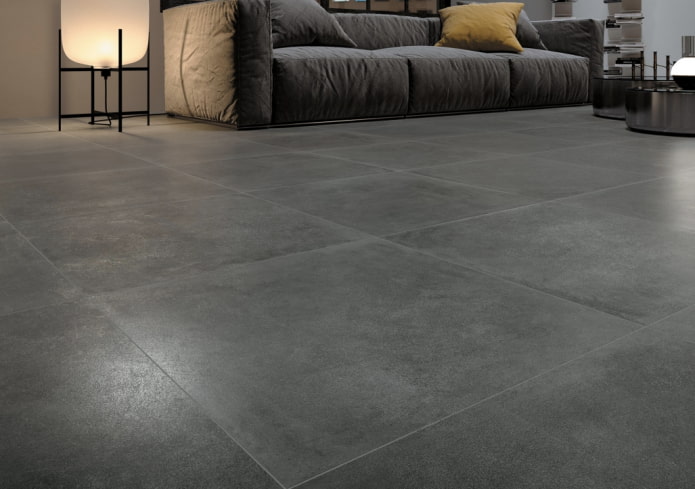
 10 practical tips for arranging a small kitchen in the country
10 practical tips for arranging a small kitchen in the country
 12 simple ideas for a small garden that will make it visually spacious
12 simple ideas for a small garden that will make it visually spacious
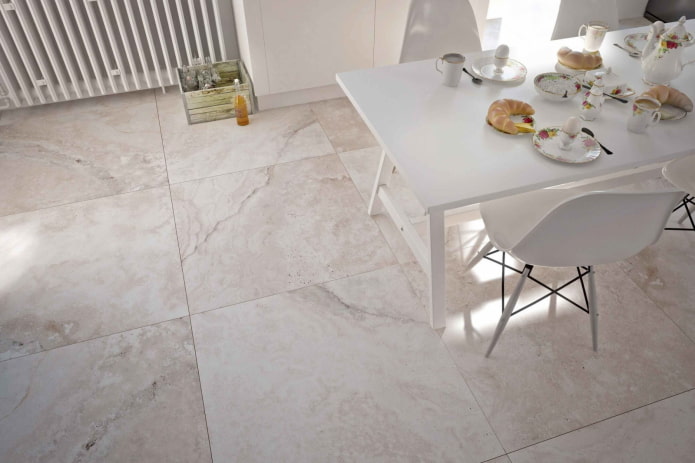
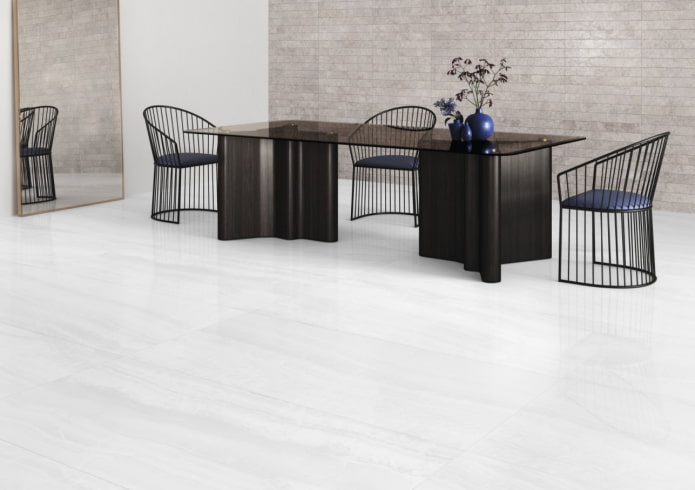
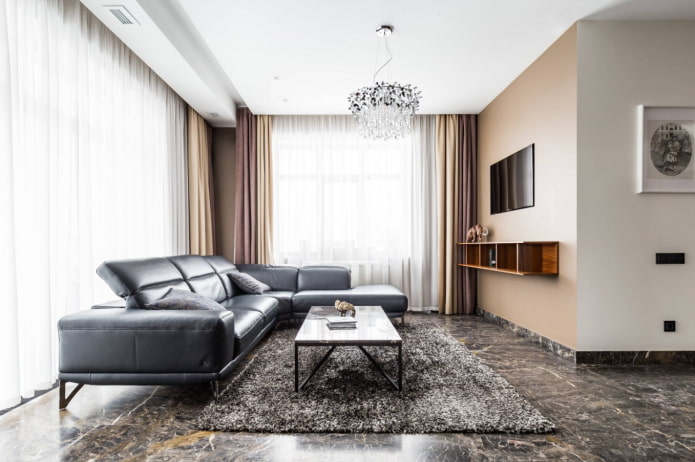

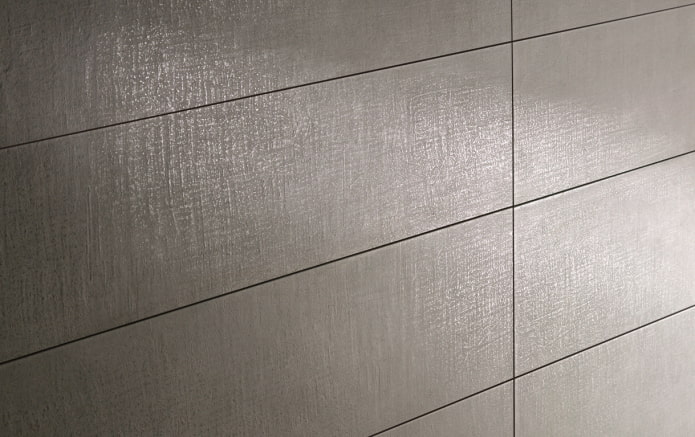

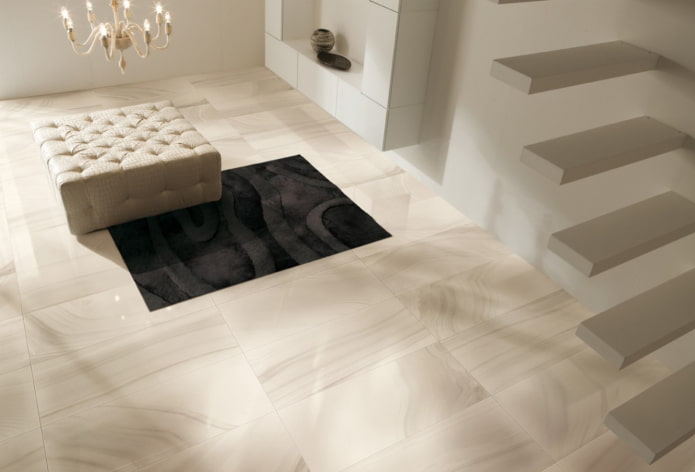
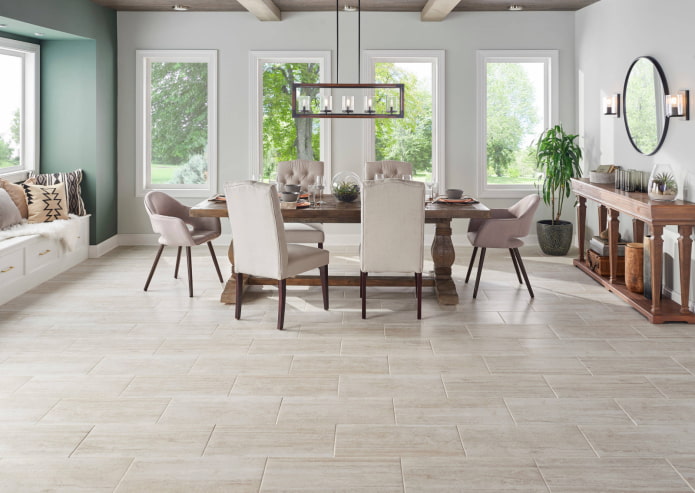
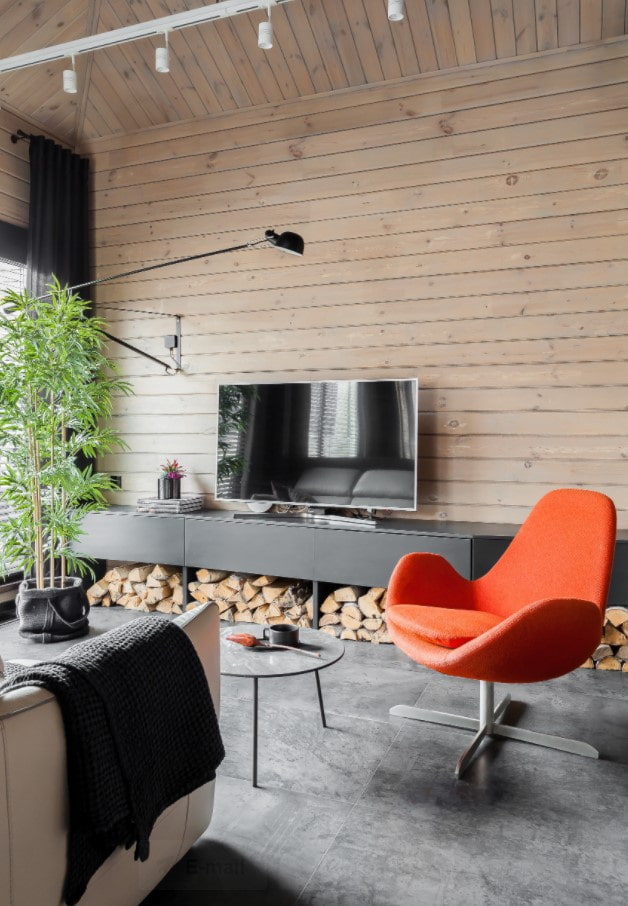
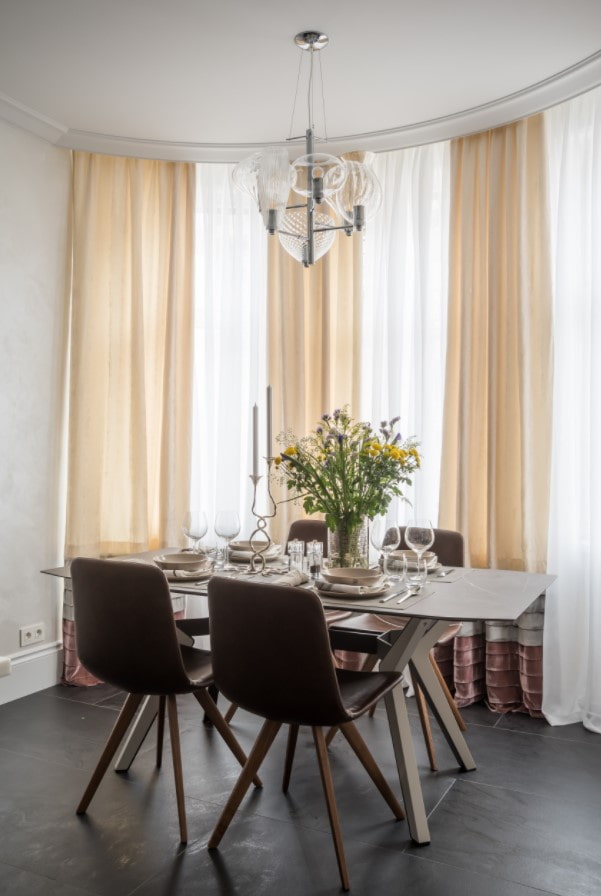
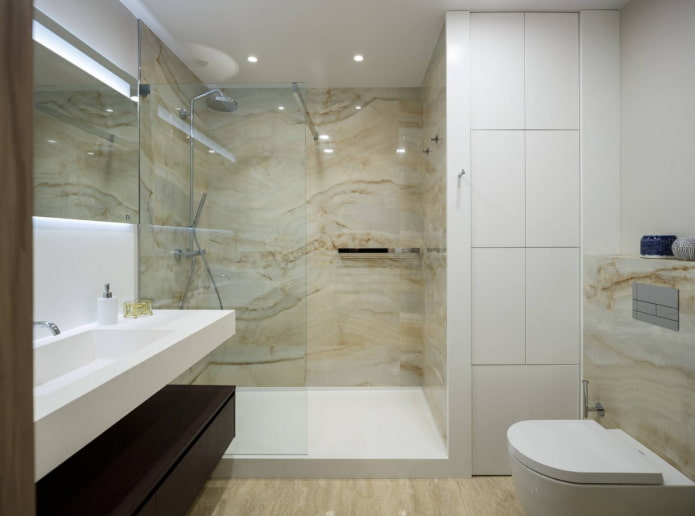

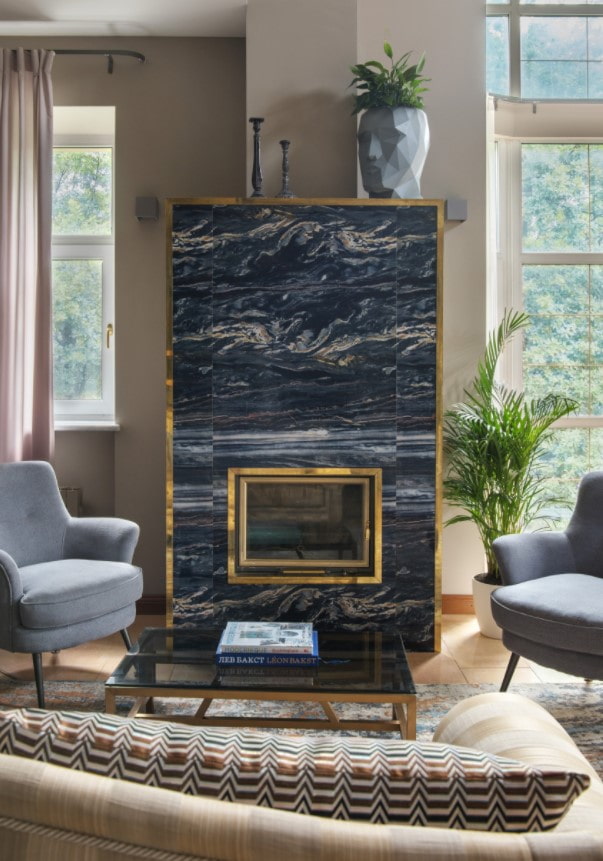
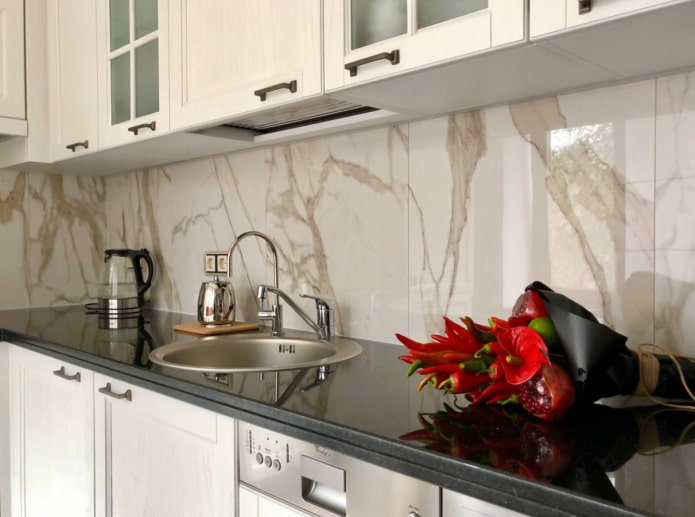
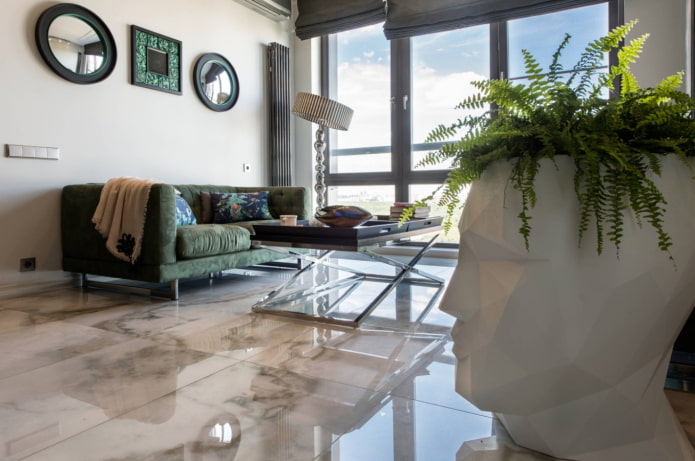
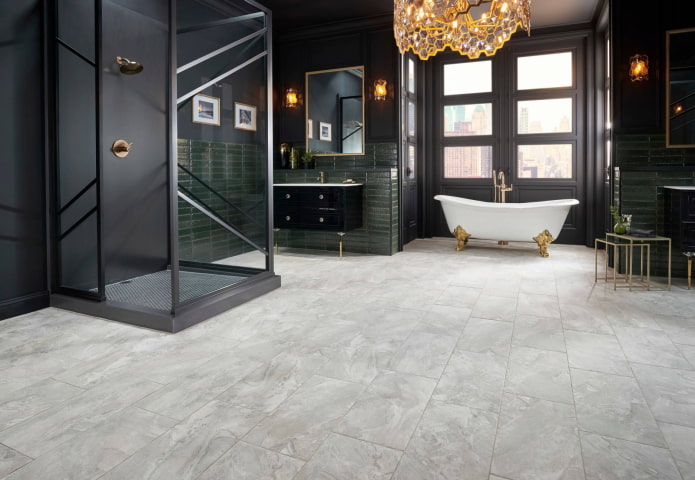
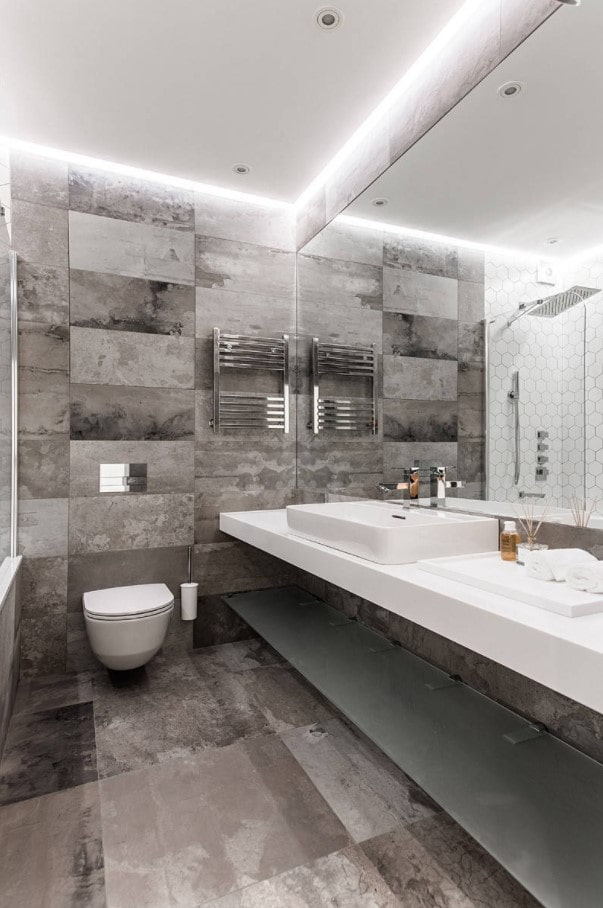
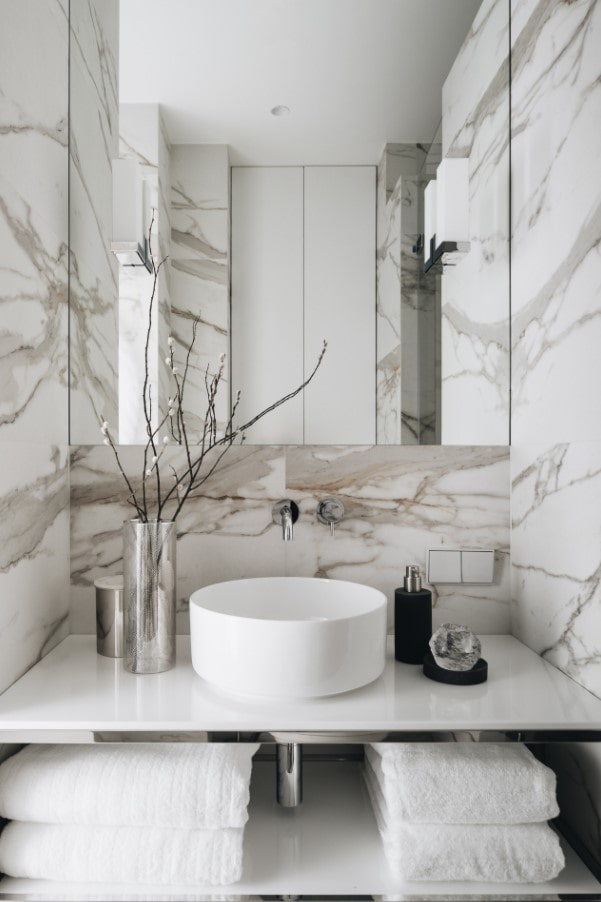
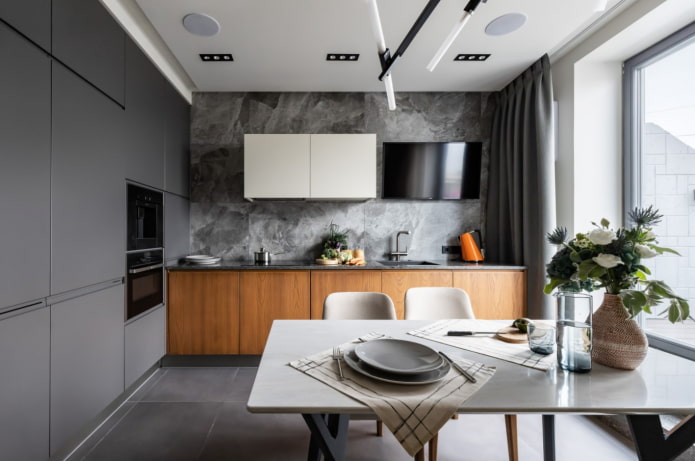

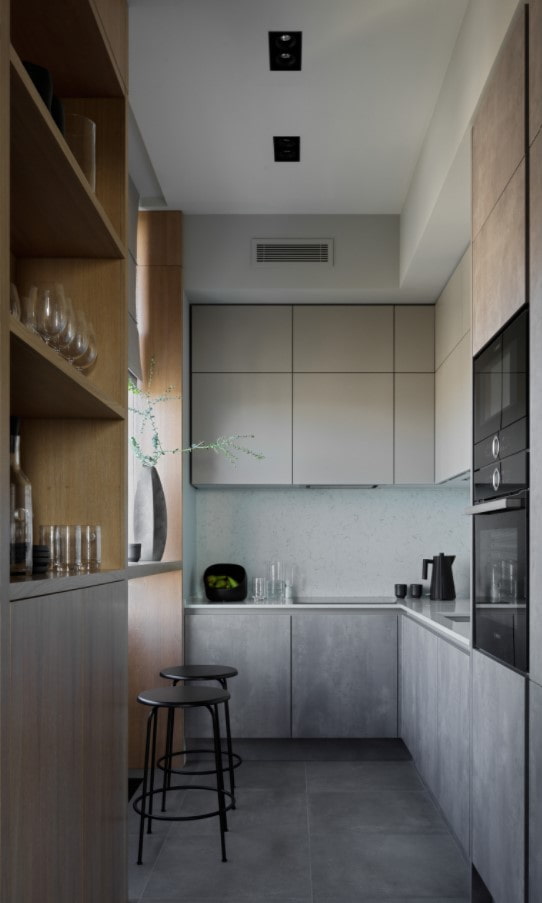

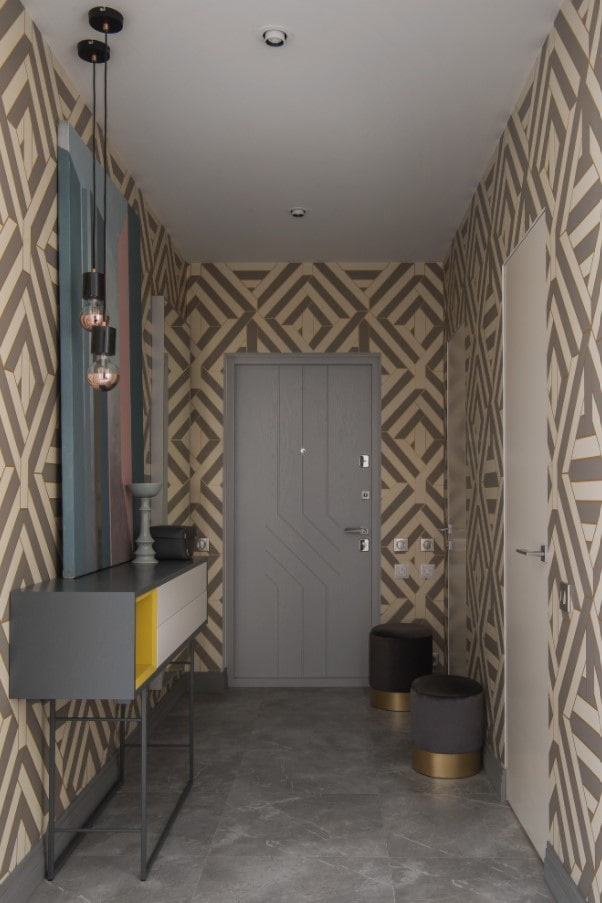
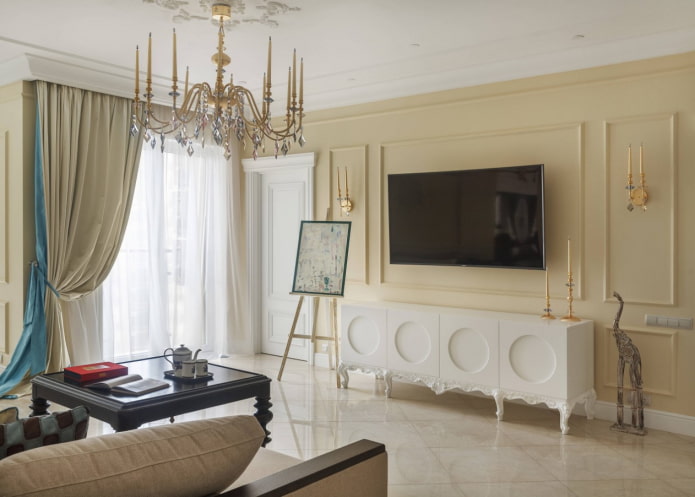

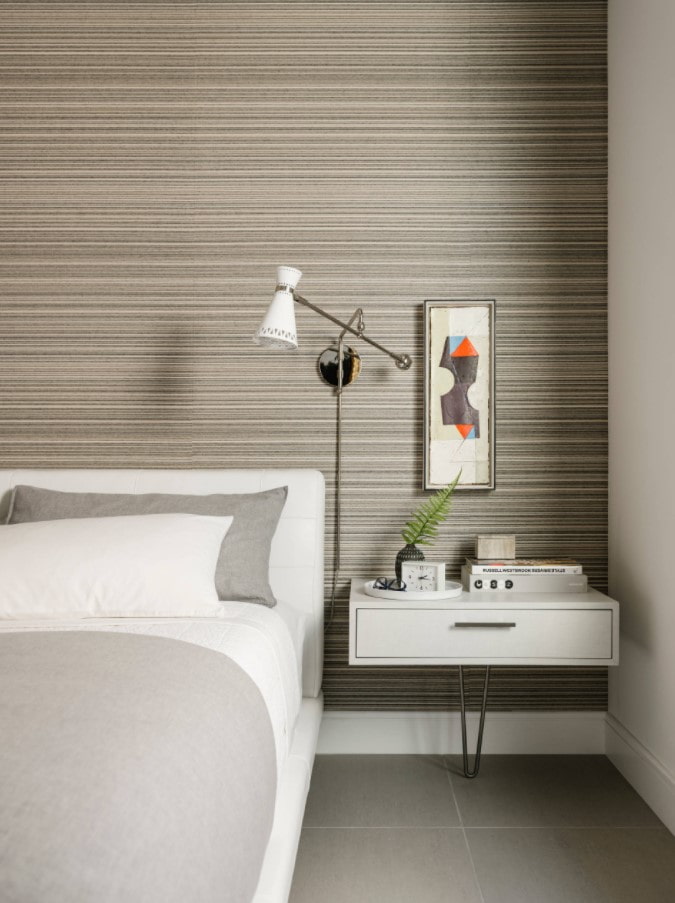
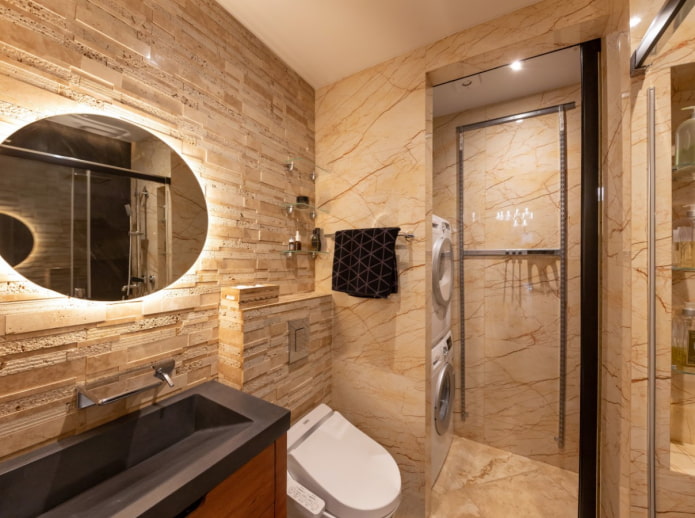


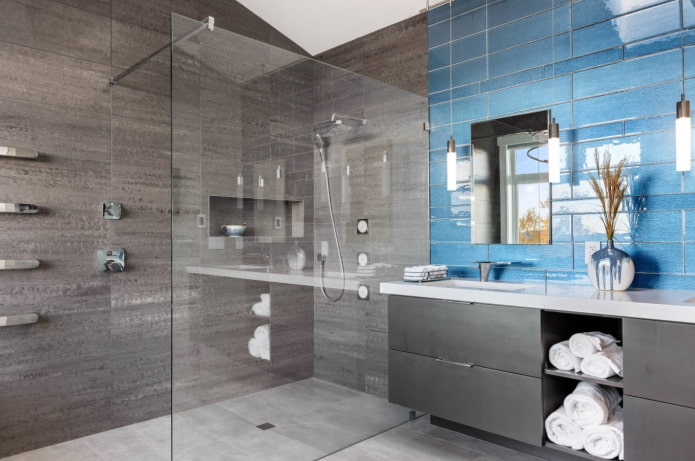
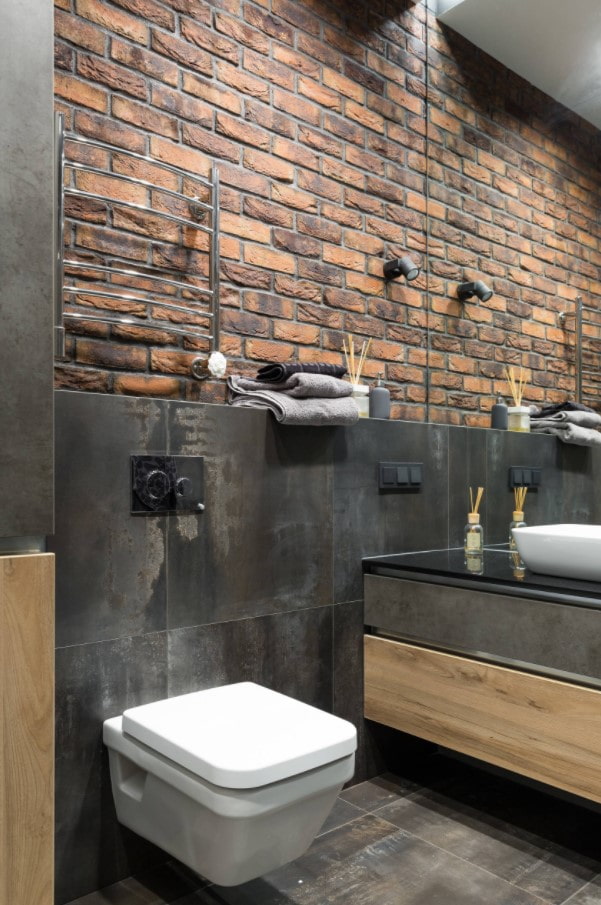

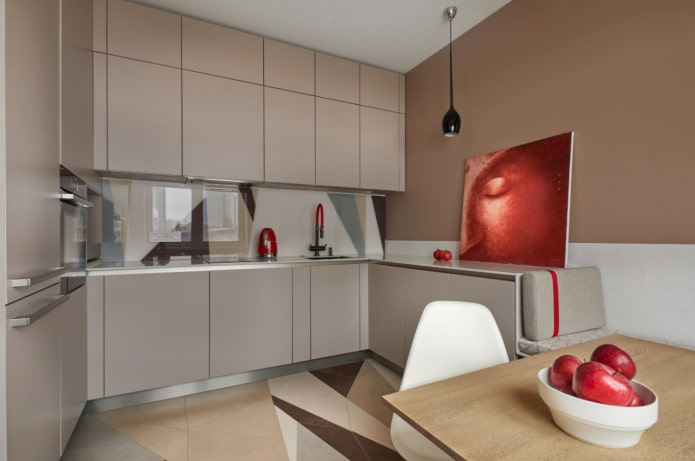
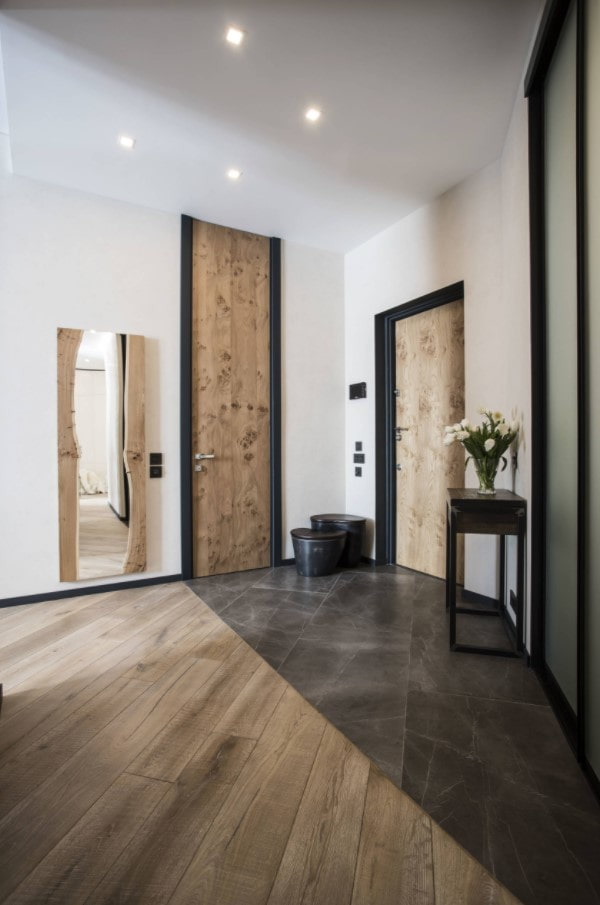

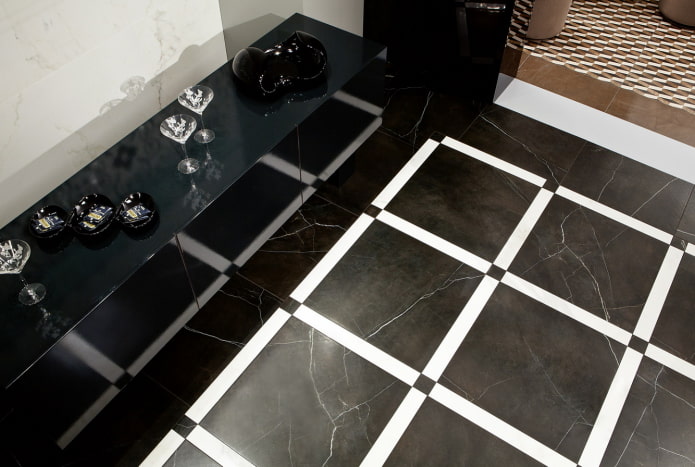
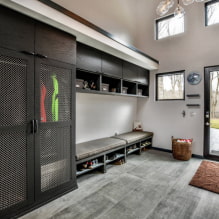
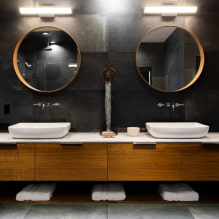

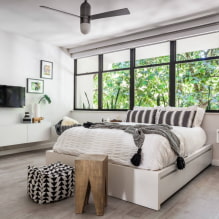
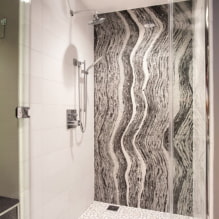
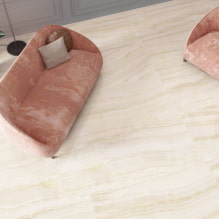
 What is better not to do it yourself during the repair?
What is better not to do it yourself during the repair? Bloated linoleum: how to fix it without disassembly
Bloated linoleum: how to fix it without disassembly The worst decisions in apartment renovation
The worst decisions in apartment renovation  Installation of ceiling tiles: choice of materials, preparation, order of work
Installation of ceiling tiles: choice of materials, preparation, order of work How to glue a ceiling plinth to a stretch ceiling?
How to glue a ceiling plinth to a stretch ceiling? Ceiling plinth for stretch ceiling: types, recommendations for selection
Ceiling plinth for stretch ceiling: types, recommendations for selection